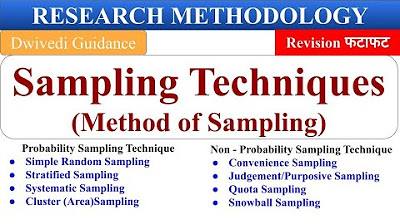VIDEO POPULASI DAN SAMPEL
Summary
TLDRThis video script focuses on research methodologies, specifically various sampling techniques, such as incidental and representative sampling. The speaker explains how these methods are used to collect data in research studies, emphasizing the importance of selecting appropriate samples. The lecture also covers the creation of a mini-proposal, which students will develop as part of the course, aiming to help them choose their thesis topics. The session encourages students to refine their proposals through discussion and feedback, with the goal of preparing them for their final assessments.
Takeaways
- 😀 The speaker emphasizes the importance of understanding various sampling techniques in research, specifically incidental sampling and saturated sampling.
- 😀 Incidental sampling involves selecting subjects who are available at the time of the study, making it convenient but not necessarily planned.
- 😀 Saturated sampling focuses on collecting data from all available units or subjects in a specific category or group.
- 😀 Representative sampling aims to create a sample that accurately reflects the larger population, making research results more generalizable.
- 😀 The speaker suggests that students review materials offline for a deeper understanding of the sampling techniques.
- 😀 A mini-proposal is a crucial assignment where students will develop a research topic and present it by the end of the semester.
- 😀 Students will be required to use the mini-proposal to design and justify their research methodology and techniques.
- 😀 The lecturer highlights that the mini-proposal could eventually serve as the foundation for their final thesis or dissertation topic.
- 😀 The importance of feedback during the mini-proposal presentation is emphasized, as it allows for refining the research design.
- 😀 The session concludes with a request for students to prepare and engage in offline discussions for better clarity on the topics covered.
- 😀 The lecturer expresses gratitude and encourages students to approach the subject with enthusiasm and curiosity, ensuring full understanding.
Q & A
What is the main purpose of sampling in research?
-The main purpose of sampling in research is to select a subset of the population to represent the entire group, allowing researchers to make inferences about the whole population based on the sample.
What is incidental (or convenience) sampling, and how is it used?
-Incidental or convenience sampling is when researchers select a sample based on the availability of units or subjects in the field, rather than pre-planning the sample selection. It is often used when it's difficult to obtain a more representative sample.
What does saturation sampling mean?
-Saturation sampling refers to the process of continuing to collect data until no new insights or information are obtained. It is used to ensure the sample is thorough and exhaustive for the study's purposes.
What is the concept of a representative sample, and why is it important?
-A representative sample is one that accurately reflects the characteristics of the broader population from which it is drawn. It is important because it ensures that the research findings can be generalized to the whole population.
How does the speaker suggest students can apply what they learn in this session?
-The speaker suggests that students can apply what they learn by creating a mini proposal as part of their coursework. This will allow them to develop and test their research ideas, which can later serve as the foundation for their thesis.
What is the significance of quizzes and assessments in this course?
-Quizzes and assessments are designed to help reinforce the learning process, ensuring that students grasp the key concepts related to sampling techniques and research design.
Why does the speaker mention the offline session in the context of learning?
-The offline session is mentioned because it provides students with an opportunity for in-depth discussion and clarification of the concepts covered in the video. This is intended to further solidify the students' understanding.
What is the expected outcome for students by the end of the course?
-By the end of the course, students are expected to have developed a mini proposal that demonstrates their understanding of research methods and can serve as a basis for their thesis topic.
What is the role of the final presentation and proposal in the course?
-The final presentation and proposal allow students to showcase their research ideas, receive feedback, and demonstrate their ability to apply research methods in a real-world context. It is a critical part of their academic development.
How can the mini proposal benefit students beyond the course?
-The mini proposal can benefit students by providing a starting point for their thesis. It serves as a foundational piece of work that can be refined and developed further for their final thesis project.
Outlines

This section is available to paid users only. Please upgrade to access this part.
Upgrade NowMindmap

This section is available to paid users only. Please upgrade to access this part.
Upgrade NowKeywords

This section is available to paid users only. Please upgrade to access this part.
Upgrade NowHighlights

This section is available to paid users only. Please upgrade to access this part.
Upgrade NowTranscripts

This section is available to paid users only. Please upgrade to access this part.
Upgrade NowBrowse More Related Video
5.0 / 5 (0 votes)





